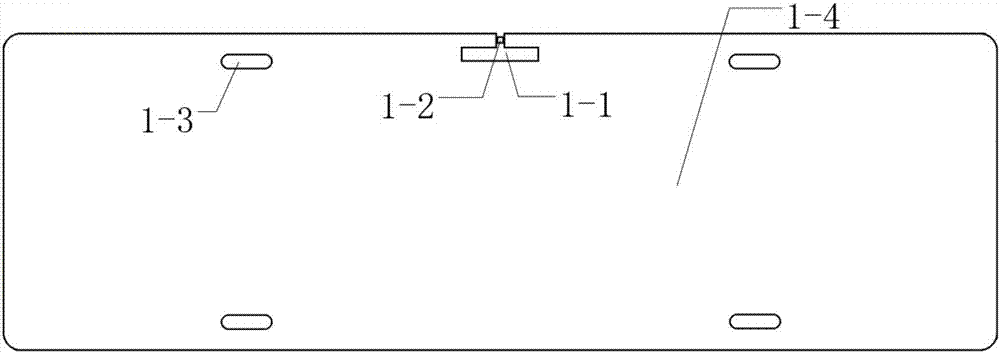Electronic number plate passive anti-metal label antenna based on RFID (Radio Frequency Identification) technology
An anti-metal tag, electronic license plate technology, applied in the direction of antenna, antenna parts, antenna support/installation device, etc., can solve the problem of unable to identify and collect the real identity of the vehicle, achieve large antenna gain, good impedance matching, antenna high gain effect
- Summary
- Abstract
- Description
- Claims
- Application Information
AI Technical Summary
Problems solved by technology
Method used
Image
Examples
Embodiment 1
[0025] The RFID passive anti-metal tag antenna made on the motor vehicle license plate includes an inverted T-shaped slot structure and a dielectric substrate. RFID chips are loaded between the vertical gaps. Setting the inverted T-shaped slot on the edge of the long side of the number plate can maximize the electrical size of the tag antenna and help improve the gain and bandwidth of the tag antenna. Due to the asymmetry of the structure, the main lobe direction of the tag antenna radiation will be biased towards the side where the inverted T-shaped slot is located, so setting the inverted T-shaped slot on the upper edge of the number plate can be more easily recognized by readers that are usually placed at high places. read.
[0026] According to the public safety industry standard GA36-2014 of the People's Republic of China, in order not to affect the printing of the number plate number, the total height of the inverted T-shaped gap should not exceed the distance from the ...
PUM
 Login to View More
Login to View More Abstract
Description
Claims
Application Information
 Login to View More
Login to View More - R&D
- Intellectual Property
- Life Sciences
- Materials
- Tech Scout
- Unparalleled Data Quality
- Higher Quality Content
- 60% Fewer Hallucinations
Browse by: Latest US Patents, China's latest patents, Technical Efficacy Thesaurus, Application Domain, Technology Topic, Popular Technical Reports.
© 2025 PatSnap. All rights reserved.Legal|Privacy policy|Modern Slavery Act Transparency Statement|Sitemap|About US| Contact US: help@patsnap.com



